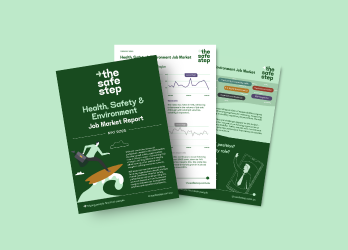HSE Community Insights - Josef Brennan
Page Published Date:
February 17, 2022
What opportunities exist for HSE professionals in 2022? What capabilities determine success for safety people? We asked Yarra Tram’s Chief Safety Officer, Josef Brennan to share insights on the profession and learnings from his career. Watch the video below or read on for key takeaways.
From dark clouds come silver linings
Whilst utterly devastating in many respects the scale and complexity of the COVID pandemic created a strong platform for safety professionals. “It's been a great opportunity for the safety industry to really demonstrate how they can adapt, interpret rules and work with Operations to apply [rules] in a practical sense,” explains Josef Brennan, Chief Safety Officer at Yarra Trams.
He believes that COVID-related challenges are far from over and that in 2022 organisations will again look to safety professionals to help people move away from “an almost fearful state of mind” to a greater sense of normalcy. To do this, HSE must engender workplace confidence around the controls that have been put in place.
Understanding leading indicators to risks
Safety improvements can be made by recognising leading indicators to risks and understanding the best measures to assess an organisation’s safety performance.
Josef sees an opportunity to identify the precursors to a risk event that could then lead to a negative consequence incident. In light rail, for example, there are particular asset and operational conditions that might lead-up to an unsafe condition e.g. a tram-to-tram incident or a derailment. How the monitoring is set up for each of these conditions can allow an organisation to take action ahead of an incident occurring.
On the OHS side certain conditions, such as “The amount of hours that people have worked, the amount of supervision that a job has, the time constraints on the job needing to be done that could cause people to take risks they usually wouldn’t .” Josef doesn’t believe the profession still has a clear understanding of what these are and how to utilise them to prevent serious incidents.
Whilst toolbox talks and safety meetings are important they don’t clearly inform that a risk profile is changing, or that an organisation needs to take a change of action to prevent an incident from occurring and they shouldn’t be mistaken for leading risk indicators.
Capabilities that support success within the HSE profession
While there are many qualities that combine to make a good safety professional, here are the top three capabilities Josef Brennan looks for:
Get the fundamentals right. People within the organisation will look to you for guidance. You must have good risk knowledge and understand the legislation that applies to your industry.
Appreciate the ‘why’. Understand the operational context of the business. What’s it’s fundamental purpose and how can HSE help deliver this? “Integrate safety systems so they become part of the operational system, not a separate entity to the delivery of the function of that business.”
Become an influencer. Soft skills are required to deliver organisational shifts and support behaviour change. “Being able to influence people to change, to improve, to recognise areas of weakness” is key says Mr Brennan.
Be humble and inquisitive
To deliver safe services or projects, HSE professionals must get to know their broader business inside-out. The best way to do this, he believes, is to be humble and inquisitive. “Go out, speak to people, ask questions, see what goes on, actually at the pointy end.”
“[I] speak to people and don't talk about safety. I'll talk about the job. I get to understand how they go about their daily business and what's important to them. [Doing] that will allow you then to better influence the systems which these people have to work to, which then enables the company to be successful.”
Variety is the spice of life
Cross-sector experience supports innovation, cross-pollination. Working in different environments helps safety professionals understand what ‘good’ really looks like. “There's so much value in moving industries and taking the best of what you've experienced from that and applying it in a different organisation or a different industry,” says Mr Brennan.
Josef Brennan spoke to Ramtin Parvar, a principal consultant at The Safe Step.




